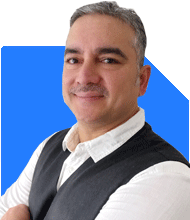Advait Arora | Answer |Ask -Follow
Financial Planner - Answered on Nov 06, 2023
He holds a masters in IT management from the University Of Wollongong, Australia, and an MBA in marketing from Charles Strut University, NewCastle, Australia.
Advait is a firm believer in the power of compounding to help his clients grow their wealth.... more

Redington has come down can we accumulate at this price
You may like to see similar questions and answers below
Samraat Jadhav |2507 Answers |Ask -Follow
Stock Market Expert - Answered on May 11, 2023
Advait Arora | Answer |Ask -Follow
Financial Planner - Answered on May 24, 2023
Samraat Jadhav |2507 Answers |Ask -Follow
Stock Market Expert - Answered on Aug 22, 2023
Samraat Jadhav |2507 Answers |Ask -Follow
Stock Market Expert - Answered on Sep 02, 2025
Samraat Jadhav |2507 Answers |Ask -Follow
Stock Market Expert - Answered on Sep 02, 2025
Nayagam P P |10854 Answers |Ask -Follow
Career Counsellor - Answered on Dec 14, 2025
Radheshyam Zanwar |6744 Answers |Ask -Follow
MHT-CET, IIT-JEE, NEET-UG Expert - Answered on Dec 14, 2025
Radheshyam Zanwar |6744 Answers |Ask -Follow
MHT-CET, IIT-JEE, NEET-UG Expert - Answered on Dec 14, 2025
Dr Dipankar Dutta |1840 Answers |Ask -Follow
Tech Careers and Skill Development Expert - Answered on Dec 14, 2025
Dr Dipankar Dutta |1840 Answers |Ask -Follow
Tech Careers and Skill Development Expert - Answered on Dec 13, 2025
Dr Dipankar Dutta |1840 Answers |Ask -Follow
Tech Careers and Skill Development Expert - Answered on Dec 13, 2025
Mayank Chandel |2575 Answers |Ask -Follow
IIT-JEE, NEET-UG, SAT, CLAT, CA, CS Exam Expert - Answered on Dec 13, 2025
Radheshyam Zanwar |6744 Answers |Ask -Follow
MHT-CET, IIT-JEE, NEET-UG Expert - Answered on Dec 13, 2025
Mayank Chandel |2575 Answers |Ask -Follow
IIT-JEE, NEET-UG, SAT, CLAT, CA, CS Exam Expert - Answered on Dec 13, 2025
Mayank Chandel |2575 Answers |Ask -Follow
IIT-JEE, NEET-UG, SAT, CLAT, CA, CS Exam Expert - Answered on Dec 13, 2025
























